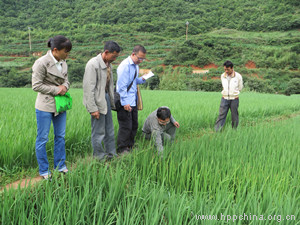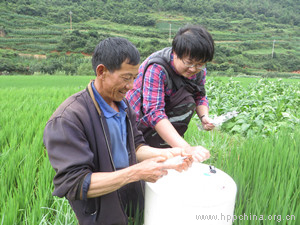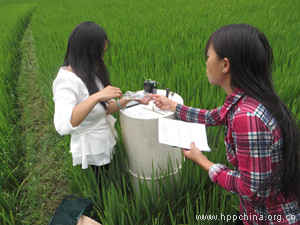FC Xundian -- Environmental friendly project
Source:Humana People to People ChinaDate:2015-09-02 00:00:00Click:835
Background: Why Climate Smart Agriculture?
Agricultural emissions account for around 14% of the world’s total greenhouse gas emissions and have a large impact on climate change from emitting CO2, methane and nitrogen oxide, furthermore agriculture is also a major of driver of deforestation and affects land use and how carbon is stored. In this way agriculture both contributes to and is most affected by climate change– a delicate balance. Farmers have great potential to mitigate agricultural emissions, and at the same time learn adaptation strategies that enhance local ecosystem functions and increase food security. These elements when implemented together make up Climate Smart Agriculture (CSA).
Poor smallholder farmers are one of the most vulnerable populations to climate change. In Yunnan, 1/3 of the population (10 million people) lives under the poverty line of 2,300 RMB per capita annually, which is about 1 USD a day. Climate change exacerbates climate variability, bringing on extreme weather events such as droughts floods that devastate food supplies and livelihoods, and further weaken abilities to adapt; climate change vulnerability is thus interlinked with the challenges of poverty. CSA offers multi-benefit solutions to build sustainable livelihoods.
Project objectives
Partnering with Yunnan Academy of Scientific and Technical Information CDM Center, and relevant experts from Yunnan Academy of Agricultural Sciences, HPP China aims to implement and evaluate various climate smart agriculture (CSA) methods with 400 farmers in central Yunnan (Xundian County/Kunming City, township and villages to be determined after needs assessment). Using HPP China’s Farmer’s Clubs model makes this the first community driven CSA project in China. The results of the methods shall provide a replicable model for future CSA programs in Yunnan and Southwest China.
This pilot will develop carbon financing for agricultural land mitigation based on three strategies:
1. Reduce agricultural emissions
2. Increase carbon storage in plant biomass
3. Increase soil carbon
Project activities: Collect emission gas sampling and install solar insecticidal lamp in rice fields
On 15th July, expert Gu Jianlong from CDM Center gave a training to farmers and project staff about how to collect gas emissions samples in rice fields. Knowing that the contribution of methane to the global greenhouse effect is second to carbon dioxide, and methane emission from rice fields is one of the major sources of atmospheric methane. Traditional rice paddies with standing water lowers the soil permeability, and leads to anaerobic fermentation of both soil organic matter and rice plant. As a result, reducing methane emissions through alternate wet and dry periods of rice cultivation and providing scientific evidence of the methane emission reduction has significance to combat climate change. We set up static boxes in rice fields, we periodically take the emissions samples then send to Yunnan environment science center to test and monitor the differences in methane emissions every week. So far we already have 4 samples sent there to test.



CDM Center gave a training to farmers and project staff


 Training about spray insecticide in field
Training about spray insecticide in field
On 22nd July, we installed four solar insecticidal lamps in Jiaba and Nuoji Villages. Solar insecticidal lamps make use of solar panel to store electricity during daytime, and supply power for insecticidal lamps at night. Insecticidal lamp emits special light of 365±50nm wavelength ultraviolet radiation, which can attract insects. The pests excited by the ultraviolet radiation are allured to pounce on the lamp light. Consequently the high voltage net around the light kills the pests which then fall into the bug bag. In this way we save energy and protect the environment, reduce pesticide residue, improve product quality and lower the environmental pollution. Later on, we will continue to observe what results it would bring in terms of emission reduction.
 Solar insecticidal lamp
Solar insecticidal lamp





 Training about spray insecticide in field
Training about spray insecticide in field Solar insecticidal lamp
Solar insecticidal lamp